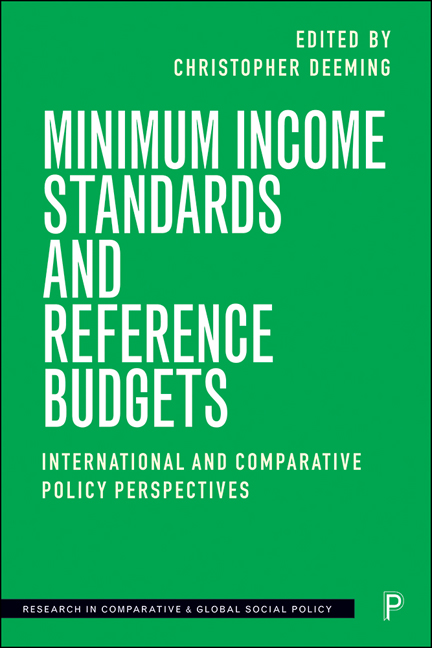20 - Basic Needs Budgets in Policy and Practice
Published online by Cambridge University Press: 12 March 2021
Summary
Introduction: US poverty measurement – the broader Context
This chapter discusses the application of ‘basic needs budgets’ (also known as ‘standard budgets’, see Innes, 1990) in efforts to influence policy in the US context. Measures which are not standard budgets have been dominant in US poverty measurement since about 1946 (Fisher, 1997a). Mollie Orshansky developed unofficial poverty thresholds in 1963– 64 by multiplying the cost of the economy food plan (a cheap, arguably adequate diet) by a factor of three – the inverse of the ratio of average food expenditure to average after-tax money income for families of three or more in 1955. After several years of quasi-official use, the thresholds were designated as the federal government's official poverty measure in 1969. They are updated annually for consumer price changes. Orshansky and others advocated that the poverty line be raised in real terms to reflect increases in the general standard of living, but this was never done (Fisher, 1997b).
Since the poverty line was adjusted for price changes only, it fell lower and lower as a proportion of median family income as real incomes rose during the rest of the 20th century. Several federal interagency committees reviewed the poverty line, and numerous people outside government criticised various aspects of it, but essentially no changes were made in it (Glennerster, 2002; see also Fisher, 1997b).
In 1992, in response to a congressional request, the Committee on National Statistics of the National Academy of Sciences convened a panel of academic experts to study the statistical issues involved in measuring and understanding poverty. The Panel on Poverty and Family Assistance published a report on its study in 1995 (Citro and Michael, 1995). The report proposed a new approach for developing an official poverty measure for the US. The panel's proposal would derive a new poverty line comprising an allowance for food, clothing and shelter, plus a small additional amount for other needs. The new poverty line would be updated annually based on changes in consumption of these necessities by a reference group of families in the general population – in other words, the poverty line would rise in real terms as the general population's real standard of living increased.
- Type
- Chapter
- Information
- Minimum Income Standards and Reference BudgetsInternational and Comparative Policy Perspectives, pp. 291 - 306Publisher: Bristol University PressPrint publication year: 2020



